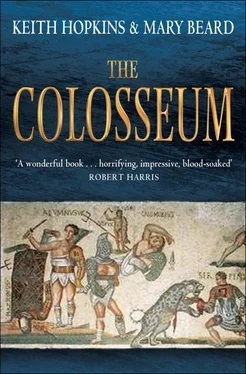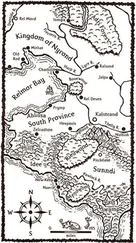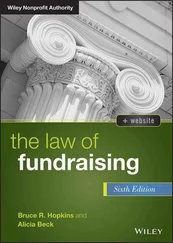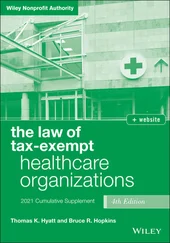Keith Hopkins - The Colosseum
Здесь есть возможность читать онлайн «Keith Hopkins - The Colosseum» весь текст электронной книги совершенно бесплатно (целиком полную версию без сокращений). В некоторых случаях можно слушать аудио, скачать через торрент в формате fb2 и присутствует краткое содержание. Город: London, Год выпуска: 2011, ISBN: 2011, Издательство: Profile Books, Жанр: История, на английском языке. Описание произведения, (предисловие) а так же отзывы посетителей доступны на портале библиотеки ЛибКат.
- Название:The Colosseum
- Автор:
- Издательство:Profile Books
- Жанр:
- Год:2011
- Город:London
- ISBN:9781846684708
- Рейтинг книги:3 / 5. Голосов: 1
-
Избранное:Добавить в избранное
- Отзывы:
-
Ваша оценка:
- 60
- 1
- 2
- 3
- 4
- 5
The Colosseum: краткое содержание, описание и аннотация
Предлагаем к чтению аннотацию, описание, краткое содержание или предисловие (зависит от того, что написал сам автор книги «The Colosseum»). Если вы не нашли необходимую информацию о книге — напишите в комментариях, мы постараемся отыскать её.
The Colosseum — читать онлайн бесплатно полную книгу (весь текст) целиком
Ниже представлен текст книги, разбитый по страницам. Система сохранения места последней прочитанной страницы, позволяет с удобством читать онлайн бесплатно книгу «The Colosseum», без необходимости каждый раз заново искать на чём Вы остановились. Поставьте закладку, и сможете в любой момент перейти на страницу, на которой закончили чтение.
Интервал:
Закладка:
We can push these conclusions a little further, if we bring into the picture one more piece of evidence from the late second century AD, about a hundred years after the Colosseum was built. It is all very speculative and the calculations get rather more complicated, but that is part of the fun. At the time, it seems, aristocrats in the Roman provinces were becoming extremely worried about the cost of putting on shows (which was part of the duty of local magistrates). The central government, under the emperor Marcus Aurelius, intervened in 177, abolishing the tax on the sale of gladiators (reluctantly perhaps as the treasury netted a considerable amount from it) and fixing, or attempting to fix, the maximum prices which presenters in the provinces paid for gladiators. Surviving inscriptions give us the detailed terms of this legislation, all amounts in which are expressed in the standard unit of Roman currency, the sesterce. Five hundred sesterces was sufficient to feed a peasant family on minimum subsistence for a year; 2000 sesterces was the notional price of an unskilled slave. 1 million sesterces was the amount of wealth necessary to qualify for senatorial rank. The figures in the decree of 177, combined with what we have already seen about rates of death, allow us very roughly to estimate the total empire-wide expenditure on gladiators (excluding the big shows at Rome) and to estimate how many gladiators all the shows in the empire consumed.
The law divides gladiators into different pay bands. It insists that half the gladiators used in each show should be ‘chorus’, the maximum price for these chorus members being 1,000–2,000 sesterces each. By contrast, skilled gladiators were priced much higher, at ten levels ranging from 3,000 to 15,000 sesterces each. All the same the pyramid of differential seems low. Opera divas today, to say nothing of football superstars, get paid fantastically more than the chorus or the pack. Perhaps these low differentials reflected the high chance of death (it was not in the owners’ interest to pay a fortune for a star with limited life expectancy) or a low skill pyramid (were the stars really that much more expert at this brutal game?) or, of course, the producers’ desire to contain the costs.
At the same time total costs for the acquisition of gladiators at each provincial show were put into five price bands, ranging from 30,000 to 200,000 sesterces – small beer indeed when compared with the metropolitan shows in the Colosseum, which were of a quite different order of grandeur (compare, for example, Hadrian reputedly spending 2 million sesterces on a show before he became emperor – though that cost would also have included beasts, gifts to the crowd and so forth). If we imagine a relatively cheap show of, say, 60,000 sesterces and remember that half the gladiators had to be ‘chorus’, that would mean twenty-four gladiators: twelve chorus and twelve stars. And even if a provincial grandee spent the maximum 200,000 sesterces and put on forty gladiators (twenty chorus, twenty stars), he could still afford only two bouts between stars of the highest grade if each gladiator fought only once (and even putting them back in the ring would not greatly increase the number of star bouts, unless he made the same pairs fight each other more than once). If these regulations were followed, all provincial shows must have been small shows.
The decree of 177 also tells us that the tax on the sale of gladiators had yielded between 20 and 30 million sesterces a year for the central government, levied at either 25 or 33 percent of the price (the decree is unclear on both points). The total price of the gladiators traded in the empire each year was, as declared for tax purposes at least, between 60 and 120 million sesterces. If we work within the coordinates we have, simplified as they must be (half of all gladiators were chorus, one in six died at each show), we can tentatively work out how many gladiators there must have been in the Roman empire as a whole and how often shows were put on in provincial venues.
Given what we know, with half the gladiators fixed as chorus, and assuming a reasonable distribution between all ten grades of star, 16,000 gladiators traded among showpresenters would have cost the bottom figure of 60 million sesterces. Is this the right order of magnitude, for provincial shows which featured normally between twenty and forty gladiators each? The answer depends on balancing the number of shows there were in a year, the number of venues, the number of fights a gladiator undertook each year and the rate of death. If we take the number of amphitheatres firmly known (over 200), add over a hundred other venues, especially in the eastern empire, which were adapted for gladiatorial shows, plus a few more for luck (to take account of gaps in our knowledge), we can guess a total of 400 venues. Allow them to stage two shows a year with an average of thirty gladiators who each fought twice a year – this was an enterprise which could all have been launched with an initial army of 12,000 gladiators. But 12,000 gladiators (400 venues × 30 gladiators) would have generated 2000 deaths in the first show and 2000 more in the second. The total throughput of gladiators empire-wide would have been 16,000. In other words, it fits!
We have taken no account here of gladiators being sold between shows (which would have added to the treasury’s profits), of tax evasion, disobedience to the law, of changing patterns over time (some scholars, on not very good evidence, have claimed that the shows became crueller in the second and third centuries), or of other factors such as replacement costs caused by retirement of gladiators. It is all a very rough estimate. But some of the implications are striking. First of all, we must be dealing with very few shows in each venue per year. On our calculations, most amphitheatres, those iconic glories of Roman cruelty, luxury and profligacy, must have been empty, or used for something tamer, on 360 days out of 365. The functions of all those thousands of gladiatorial images must in part have been to memorialise and keep in the mind events that in real life were rather few and far between. Spectators were likely to have been much more familiar with gladiators practising than fighting in ‘real’ combat. On the other hand, 16,000 gladiators outside the capital amounts to roughly the manpower of three legions of the Roman army. Added to that, however, must be the many who were based in Rome itself (Pliny claims that before the building of the Colosseum, under Caligula, there were 20,000 in the imperial training camps – only two of whom, apparently could look danger in the eye without blinking!). We are then dealing with a gladiatorial machine perhaps equal to something like a quarter of the strength of the Roman legions combined.
What, finally, of the toll in casualties? In individual contests, as we have stressed, slaughter was far less common than our popular image suggests. But what of the aggregate of deaths in the arena? At a death rate of one in six, we have already estimated 4000 gladiatorial fatalities per year outside Rome. We need to add to that the condemned criminals executed at the shows and the deaths, accidental or not, among animal attendants and hunters; say 2000. The figures for the casualties in Rome itself are harder to estimate, partly because of the enormous fluctuations between years which saw vast displays hosted by the emperor and those when only the regular shows of senators were laid on. It may be reasonable to guess that the capital on average saw something like one third of the deaths in the rest of the empire; say 2000 again. A grand total of 8000 deaths in the arena a year is then our best tentative guesstimate. Not much of a burden, one might initially think, for an empire with a total population of 50 to 60 million people. But, in fact, 8000 deaths per year, mostly of trained muscular young adult males, would be equal to about 1.5 per cent of all 20-year-old men. Seen in these terms, the death of gladiators constituted a massive drain on human resources. Gladiatorial shows were a deadly death tax.
Читать дальшеИнтервал:
Закладка:
Похожие книги на «The Colosseum»
Представляем Вашему вниманию похожие книги на «The Colosseum» списком для выбора. Мы отобрали схожую по названию и смыслу литературу в надежде предоставить читателям больше вариантов отыскать новые, интересные, ещё непрочитанные произведения.
Обсуждение, отзывы о книге «The Colosseum» и просто собственные мнения читателей. Оставьте ваши комментарии, напишите, что Вы думаете о произведении, его смысле или главных героях. Укажите что конкретно понравилось, а что нет, и почему Вы так считаете.












